Disclosure: This article contains affiliate links. We may earn a commission from purchases at no extra cost to you, which helps our travel content.
The crisp fall air of New Mexico's high desert greeted me as I stepped off the plane in El Paso, my trusty field notebook already in hand. I'd extended my stay after a veterinary conference in Albuquerque to explore Alamogordo—a place where America's space history and stunning natural landscapes collide. As someone who spends equal time peering through microscopes and telescopes, this desert town nestled between White Sands and Sacramento Mountains promised the perfect blend of scientific history and natural wonder for a weekend adventure.
Where Space Age Meets Desert Frontier
Alamogordo isn't just another dusty southwestern town—it's a living museum of America's atomic and space age ambitions. Driving down New York Avenue, the town's main thoroughfare, I was immediately struck by the mid-century modern architecture that defines much of the downtown area. The clean lines and futuristic elements of buildings like the historic Sands Theater speak to the optimism of the 1950s and 60s when Alamogordo found itself at the crossroads of America's military and space endeavors.
What makes this architectural tour so fascinating is the context—these buildings weren't designed as retro novelties but as earnest expressions of a community looking toward the stars. I spent my first morning simply walking the downtown grid, my polarized sunglasses cutting through the intense New Mexico glare to reveal details I might have otherwise missed: atomic-inspired signage, parabolic rooflines, and decorative elements that evoke satellites and spacecraft.
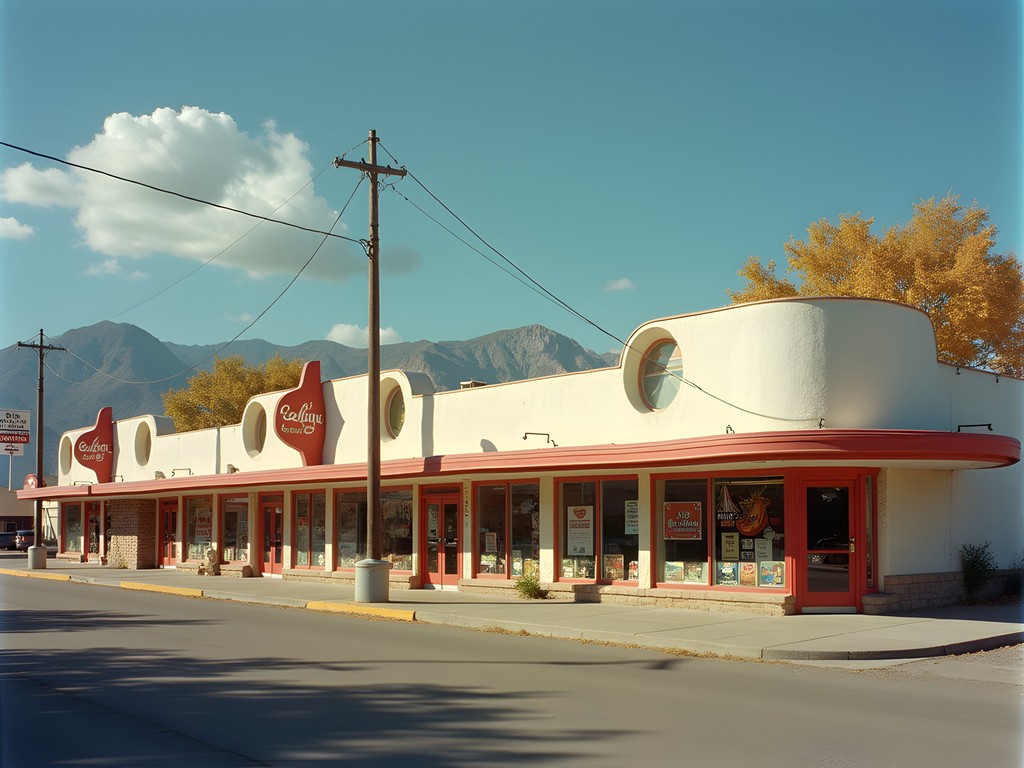
💡 Pro Tips
- Visit early morning or late afternoon when the slanted sunlight highlights architectural details
- The Chamber of Commerce offers free walking tour maps of historic buildings
- Many business owners are happy to share stories if you express interest in their building's history
White Sands: Where Astronomy Meets Wildlife
No trip to Alamogordo would be complete without exploring White Sands National Park, just 15 minutes from downtown. As both a veterinarian and amateur astronomer, this landscape offers a unique intersection of my passions. The gypsum dunes aren't just visually stunning—they're also home to remarkable wildlife adaptations that would fascinate any biologist.
I arrived at the dunes just before sunset, when the wildlife begins to emerge and the harsh light softens. Having studied evolutionary adaptations professionally, I was particularly interested in the bleached lizards and insects that have evolved lighter colorations to blend with the white sands—a textbook example of selective adaptation that I've referenced in many veterinary lectures.
As darkness fell, I set up my portable star tracker to capture the night sky above the alabaster landscape. The lack of light pollution makes this an exceptional spot for astrophotography. I spent hours tracking the Milky Way as it arched over the otherworldly terrain, occasionally spotting kangaroo rats and kit foxes going about their nocturnal business across the dunes.
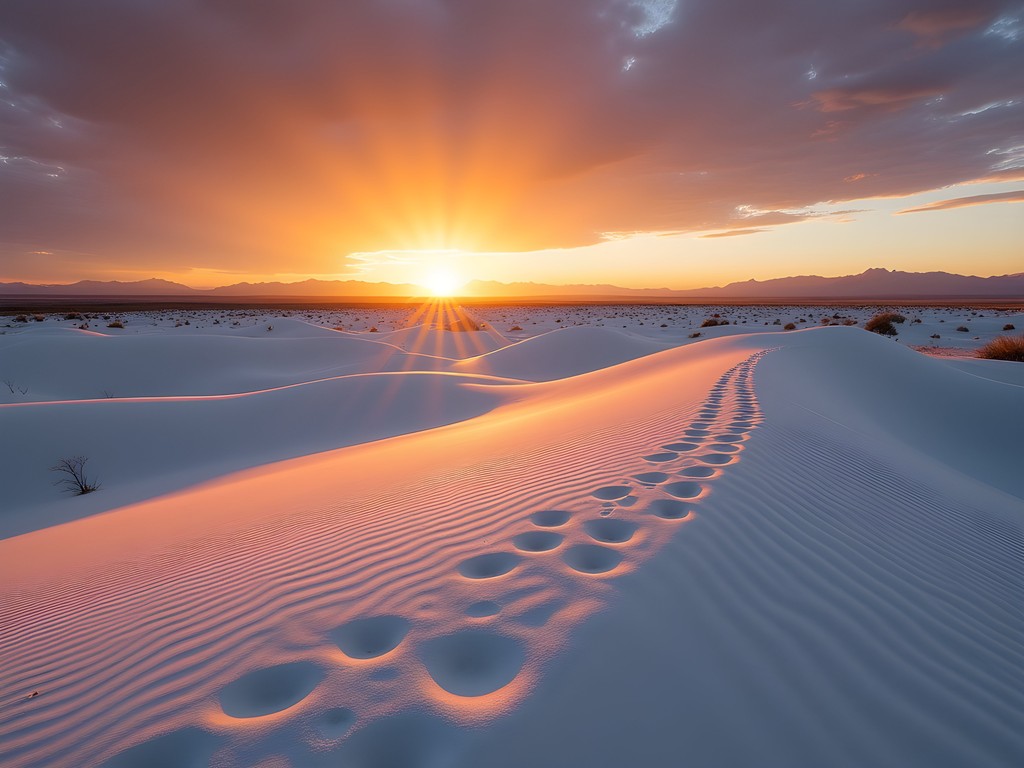
💡 Pro Tips
- Visit at sunset for the best wildlife viewing opportunities
- Bring a red-light headlamp to preserve your night vision for stargazing
- Check the park's website for full moon nights when they offer special evening programs
New Mexico Museum of Space History: A Scientific Pilgrimage
Perched on the western flank of the Sacramento Mountains, the New Mexico Museum of Space History stands as a golden-domed sentinel overlooking the Tularosa Basin. For someone who grew up tracing constellations through Wyoming's dark skies, this museum felt like a pilgrimage site.
What separates this space museum from others I've visited is its connection to the land itself. The exhibits don't just showcase spacecraft and satellites—they tell the story of how this particular landscape became ground zero for America's journey to the stars. The outdoor exhibits, including actual rockets and the International Space Hall of Fame, are particularly impressive against the desert backdrop.
I was fortunate to time my visit with one of their special planetarium shows about indigenous celestial navigation—a fascinating intersection of cultural and astronomical knowledge. Before heading up to the museum, I made sure to pack my insulated water bottle, as the combination of altitude and desert climate can quickly lead to dehydration, something I'm always cautioning pet owners about in similar environments.
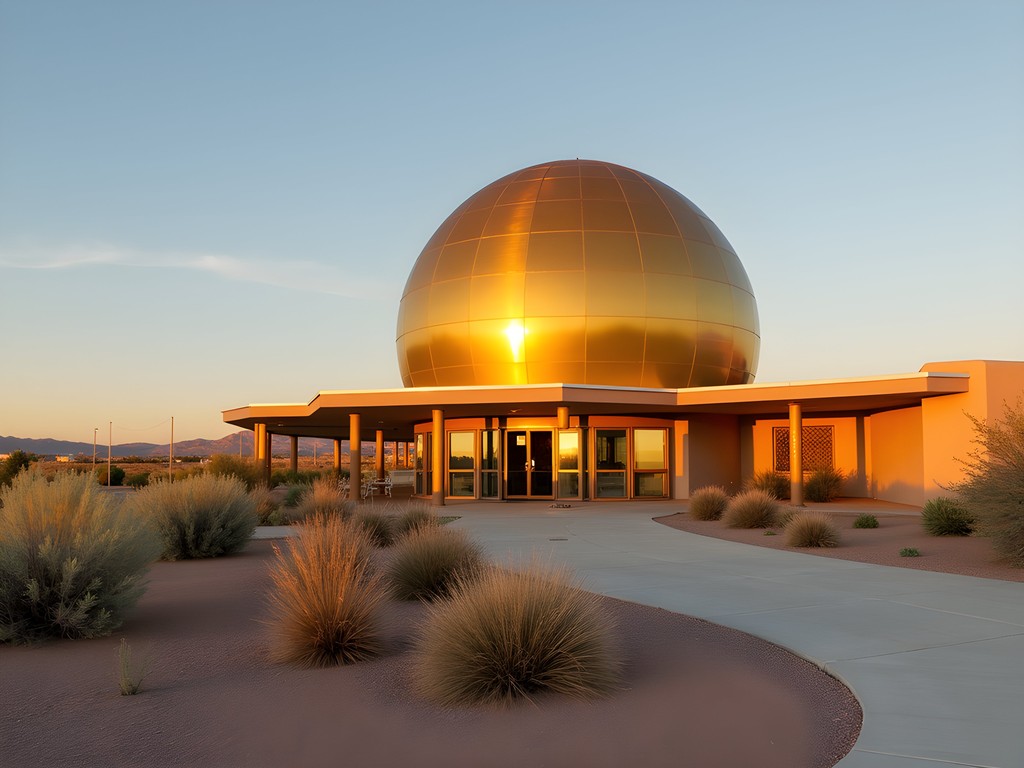
💡 Pro Tips
- Allocate at least 3 hours to fully experience all exhibits and the planetarium
- The outdoor rocket garden is best visited in morning light for photography
- Check their website for special lectures and events that often feature NASA personnel
Trinity Site: Confronting Scientific Legacy
As someone with scientific training, I believe in facing the full spectrum of our technological achievements—both the inspiring and the sobering. While the Trinity Site (where the first atomic bomb was detonated) is only open to the public twice yearly, my fall visit coincided with one of these rare access days.
The drive from Alamogordo to the Trinity Site takes about two hours and requires passing through White Sands Missile Range security. I recommend wearing closed-toe shoes and bringing a personal radiation detector. While radiation levels are safe for brief visits, as a scientist, I appreciate having my own measurements.
Standing at ground zero—marked by a simple lava rock obelisk—provides a profound moment of reflection. The juxtaposition of the peaceful desert landscape with the knowledge of what occurred here creates a cognitive dissonance that's important to experience. The McDonald Ranch House, where scientists assembled the plutonium core, has been preserved and offers another dimension to the story.
As both a veterinarian and conservationist, I found myself contemplating the environmental impacts of that moment in 1945, and how it forever changed both human history and our relationship with the natural world.
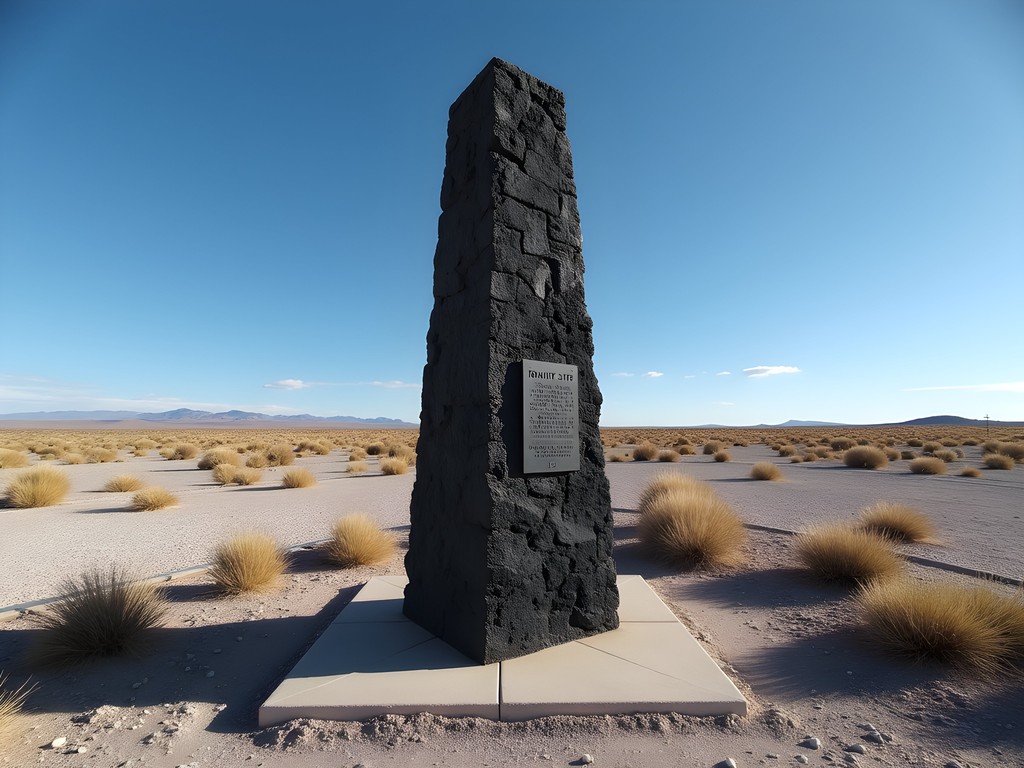
💡 Pro Tips
- Trinity Site is only open the first Saturday in April and October—plan accordingly
- Bring your own water and snacks as there are no services on site
- Photography is permitted but tripods and drones are not allowed
Local Cuisine: Where Science Meets Spice
After days of intellectual and visual stimulation, I found Alamogordo's food scene to be an unexpected highlight. The town's culinary identity sits at the crossroads of traditional New Mexican cuisine, military base practicality, and the multicultural influence of the scientific community that has cycled through over decades.
I made it my mission to sample as many local green chile specialties as possible, keeping notes in my food journal about each variation. The standout was undoubtedly CJ's Si Señor Restaurant, where the green chile stew achieved that perfect balance of heat and flavor complexity. What made the experience special was chatting with the owner about how recipes evolved when scientists and military personnel from around the country brought their tastes to New Mexico.
For breakfast, I recommend stopping by Waffle & Pancake Shoppe—a classic diner that feels frozen in the same mid-century aesthetic as the town's architecture. Their atomic breakfast burrito (smothered in both red and green chile—"Christmas style") provided the sustained energy needed for long days of exploration.

💡 Pro Tips
- Ask for chile 'on the side' if you're uncertain about your spice tolerance
- Many restaurants close between lunch and dinner—plan accordingly
- The Locals' Corner Cafe often has specials featuring seasonal ingredients from nearby farms
Final Thoughts
As my weekend in Alamogordo drew to a close, I found myself reflecting on how this unassuming desert town embodies the intersection of so many of my interests—scientific discovery, natural adaptation, and the complex relationship between human innovation and the environment. From the stark white dunes harboring uniquely adapted wildlife to the golden dome of the Space Museum reflecting our cosmic aspirations, Alamogordo offers a surprisingly rich experience for the scientifically curious traveler.
What struck me most was how the town's mid-century architecture serves as more than just a stylistic curiosity—it's a physical timeline of America's technological coming-of-age, set against one of the most striking natural landscapes in the Southwest. As someone who regularly navigates between the microscopic world of veterinary medicine and the vast expanses of astronomical observation, I found Alamogordo to be a place where these scales of perception meet in fascinating ways.
If you're drawn to destinations that offer both intellectual substance and natural beauty, put Alamogordo on your list. Just be sure to bring your scientific curiosity, a good pair of hiking boots, and plenty of water—the desert has much to teach those willing to observe closely.
✨ Key Takeaways
- Alamogordo's architecture tells the story of America's space age ambitions in concrete and steel
- Visit White Sands at sunset for wildlife viewing and stay for exceptional stargazing opportunities
- The town offers a unique intersection of scientific history, natural wonders, and authentic Southwestern culture
- Fall visits offer ideal temperatures and coincide with one of the Trinity Site's bi-annual public openings
📋 Practical Information
Best Time to Visit
Fall (September-November)
Budget Estimate
$400-600 for a weekend (lodging, food, attractions)
Recommended Duration
2-3 days
Difficulty Level
Easy

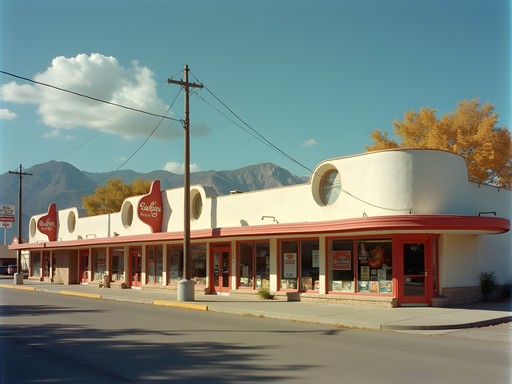
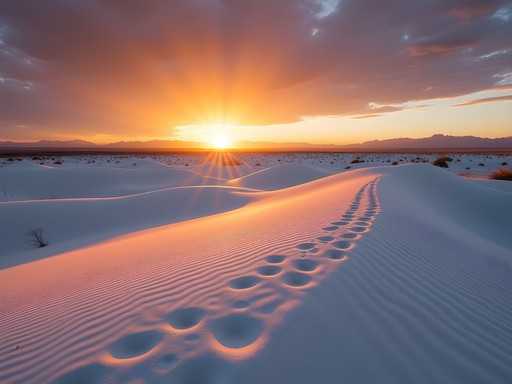
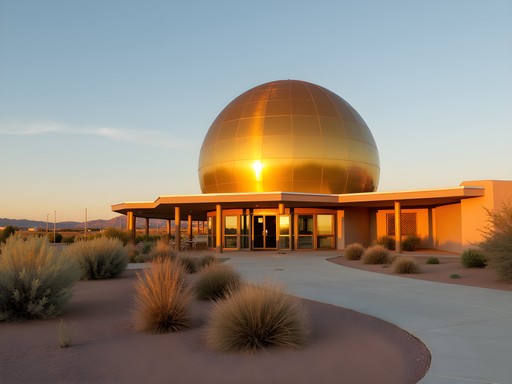
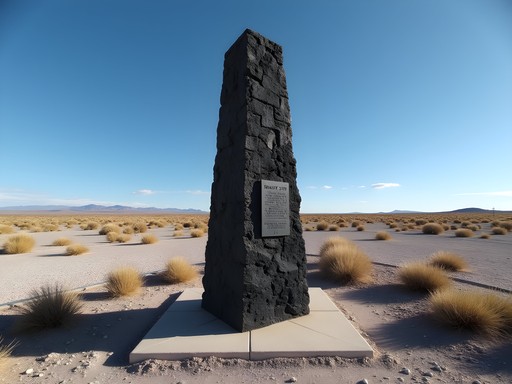

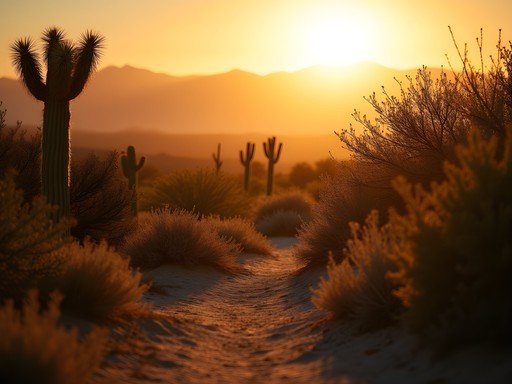
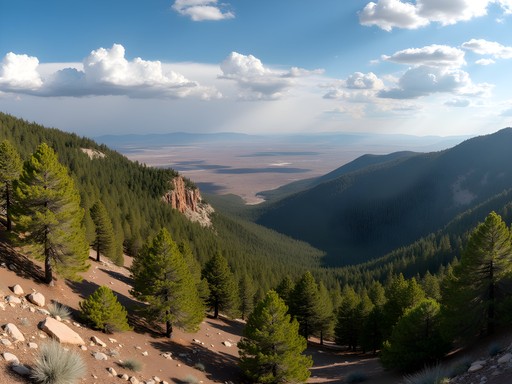
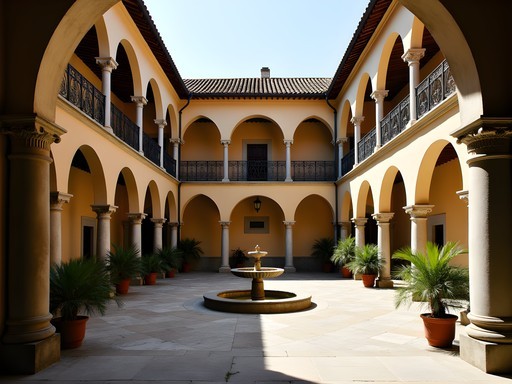
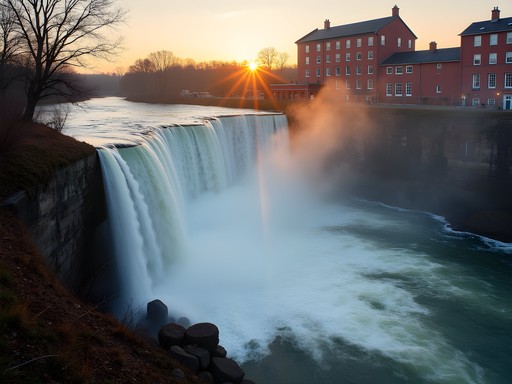
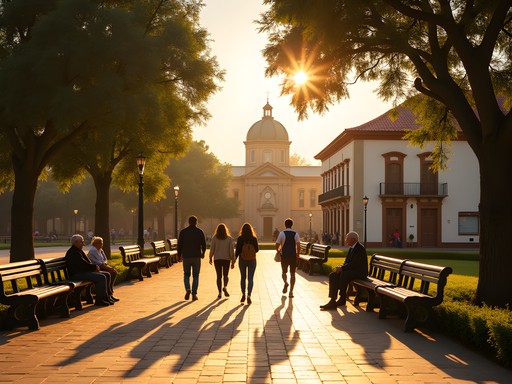


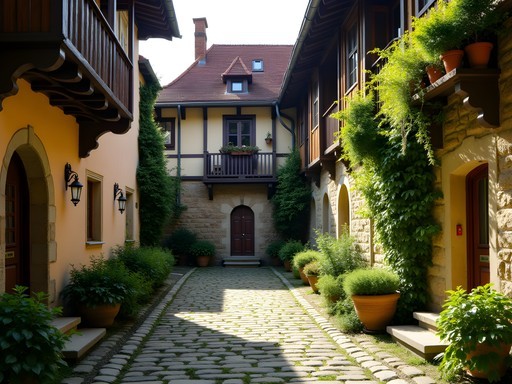
Comments
RoadTripper22
Planning to visit in November. Is the weather still decent then? And how crowded is White Sands on weekends?
DesertDweller505
November is perfect! Sunny days around 65°F, cool nights. White Sands is much less crowded than summer. Go early morning for best photos and fewer people.
RoadTripper22
Thanks for the insider tip! Early morning it is.
DesertDweller505
As a local, I'm so glad you highlighted our space history! Most tourists just do White Sands and miss the rest.
Frank Carter
Kevin, your piece really captured that fascinating contrast between Alamogordo's sleepy desert town vibe and its significant space-age history. I visited last spring and was similarly struck by how the architecture tells such a compelling story about America's atomic and space era ambitions. The juxtaposition of those mid-century modern buildings against the ancient desert landscape creates such a powerful narrative. One spot I'd add to your excellent itinerary is the Tularosa Basin Historical Museum downtown. Small but packed with local context that helps connect the dots between the ranching history and how the military/scientific presence transformed the region. I spent a fascinating afternoon there with my travel journal sketching some of the vintage photographs they had of the early White Sands testing days.
Kevin Carpenter
Frank, thanks for that thoughtful addition! I completely missed the Tularosa Basin museum and now I'm kicking myself. That historical context is exactly what I love exploring. Definitely adding it to my list for when I inevitably return to dig deeper into the area.
moonqueen
I visited White Sands last year and was completely blown away! The contrast between the pure white gypsum and the blue sky is unreal. Did you get to go sledding down the dunes? That was honestly the highlight of our trip - felt like a kid again! The space museum was fascinating too, but I wish we'd timed our visit for the Trinity Site open house like you did. That must have been a powerful experience.
Taylor Moreau
The Trinity Site is quite the sobering experience. I visited in 2024 during one of their bi-annual open houses. Definitely plan ahead as they only open in April and October.
moonqueen
Thanks for the tip about the open house dates! Adding that to my calendar for next year.
travelpro
Just got back from Alamogordo last week! White Sands was incredible - did you catch sunset there? The colors on the dunes were unreal. We missed the Trinity Site though, didn't realize it's only open certain days. Definitely putting the Space History Museum on my list for next time.
Kevin Carpenter
Yes! The sunset at White Sands was magical - that golden hour light on the white gypsum is something else. And good point about Trinity - I should have emphasized more that it's only open twice a year. Hope you make it back for the museum!
travelpro
Definitely will! Did you try any good local restaurants worth mentioning?
Kevin Carpenter
Can't believe I forgot to mention food! Hi-D-Ho Drive-In for classic New Mexican burgers, and if you like green chile, CJ's Si Señor Restaurant downtown was fantastic. Nothing fancy but really authentic.
summerlife
Those photos of White Sands are incredible! Adding this to my bucket list!
Gregory Boyd
Brilliant piece on Alamogordo's architectural dichotomy! I trekked through there last spring and was similarly struck by the juxtaposition of mid-century optimism against the stark desert landscape. The Space History Museum's brutalist design is particularly fascinating - almost like a concrete spaceship jutting from the mountainside. Your reflection on the Trinity Site's complex legacy resonated deeply. I spent hours there contemplating the ethical dimensions of scientific progress. One tip for future travelers: the local pistachio farms just outside town make for an interesting agricultural counterpoint to all the space-age exploration. Did you happen to visit any of them?